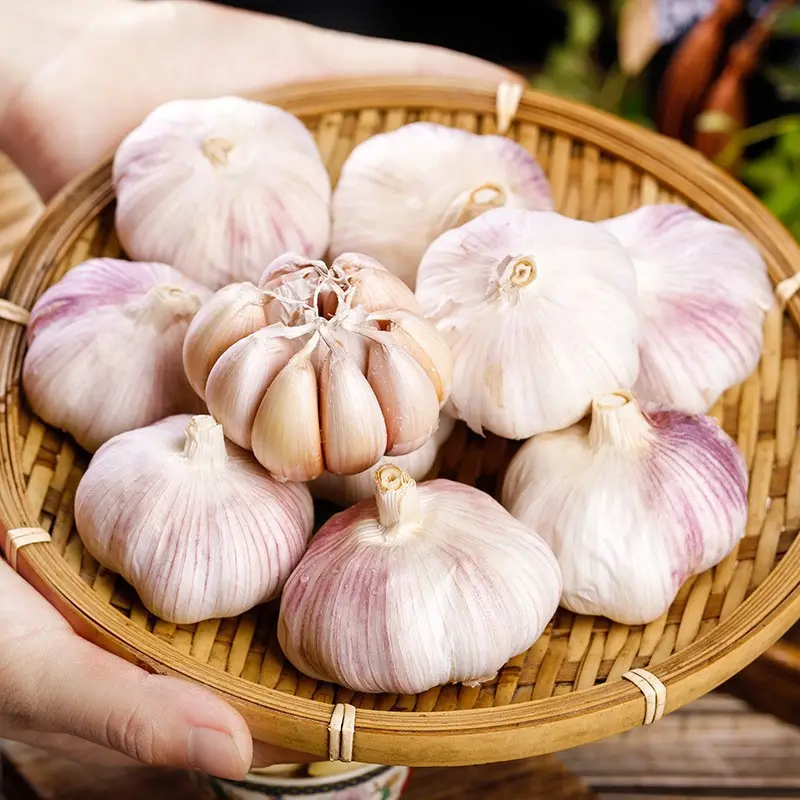Essential Guidelines for International Garlic Trade
The global garlic trade represents a significant segment of the agricultural import industry, with millions of tons moving across borders annually. Importing garlic in commercial quantities requires careful planning, market understanding, and compliance with various regulations. Whether you're an established importer or venturing into this lucrative market for the first time, success depends on mastering several crucial aspects of the trade.
The complexity of importing garlic extends beyond simple buying and selling. It encompasses understanding international trade regulations, quality standards, storage requirements, and market dynamics. This comprehensive guide will walk you through the essential considerations to ensure your garlic importing venture is both profitable and compliant.
Quality Assessment and Source Selection
Varieties and Grade Standards
When importing garlic, understanding different varieties and their characteristics is crucial. Chinese garlic, Spanish garlic, and California garlic each have distinct features and market preferences. Premium varieties typically show bright, firm bulbs with tight, unbroken skin. The size classification usually ranges from small (40-50mm) to extra-large (60mm+), with most commercial imports falling in the medium to large categories.
Quality grades must meet international standards, including factors such as size uniformity, color consistency, and freedom from defects. Professional buyers often inspect samples before placing bulk orders, checking for signs of disease, damage, or sprouting. The absence of roots and clean, white-to-purple skin typically indicates properly cured garlic suitable for importing.
Supplier Evaluation and Relationships
Establishing reliable supplier relationships is fundamental to successful garlic importing. Verified suppliers should demonstrate consistent quality, reliable production capacity, and proper certification. Look for suppliers with GAP (Good Agricultural Practices) certification and experience in international trade.
Regular communication and occasional site visits can help maintain quality standards and ensure smooth operations. Many successful importers work with multiple suppliers across different regions to mitigate risks and ensure year-round supply availability.

Regulatory Compliance and Documentation
Import Permits and Certifications
Navigating regulatory requirements is essential when importing garlic. Most countries require specific permits, phytosanitary certificates, and documentation proving the garlic meets local food safety standards. The documentation process typically includes import licenses, customs declarations, and proof of origin certificates.
Food safety certifications like HACCP and compliance with maximum residue limits (MRLs) for pesticides are increasingly important. Successful importers maintain updated knowledge of changing regulations and ensure their suppliers meet all necessary requirements.
Customs Clearance Procedures
Understanding customs procedures helps prevent costly delays. Each shipment requires proper labeling, accurate documentation, and sometimes pre-shipment inspection certificates. Working with experienced customs brokers can streamline the process and ensure compliance with local regulations.
Many countries have specific requirements for agricultural imports, including sampling and testing protocols. Preparing for these procedures and understanding potential delays can help manage expectations and maintain smooth operations.
Logistics and Storage Considerations
Transportation Requirements
Proper transportation is crucial when importing garlic. Temperature-controlled containers maintain quality during long-distance shipping. The ideal temperature range is typically between 0-4°C (32-39°F) with relative humidity around 65-70%. Ventilation is essential to prevent moisture accumulation and potential spoilage.
Container selection and loading patterns affect both product quality and shipping costs. Standard 40-foot containers can typically accommodate 25-28 metric tons of garlic, depending on packaging specifications. Professional loading supervision helps ensure proper weight distribution and ventilation.
Storage and Handling
Proper storage facilities are essential for maintaining garlic quality after arrival. Warehouses should provide consistent temperature and humidity control. Regular monitoring helps detect any quality issues early, allowing for prompt intervention if needed.
Inventory management systems help track storage conditions, stock rotation, and shelf life. Most properly stored garlic maintains optimal quality for 6-8 months, though this varies by variety and initial condition.
Market Analysis and Pricing Strategy
Demand Assessment
Understanding market demand patterns helps optimize import volumes and timing. Seasonal variations, local production cycles, and consumer preferences influence demand. Regular market research and customer feedback help importers adjust their strategies effectively.
Building relationships with major buyers and understanding their requirements helps ensure stable demand. Many successful importers maintain diverse customer bases across different market segments to reduce risk.
Pricing Considerations
Pricing strategies must account for various costs including shipping, storage, customs duties, and potential losses. Market prices can fluctuate significantly based on global supply conditions and local market factors. Maintaining flexible pricing strategies while ensuring sustainable margins is crucial.
Understanding price trends and maintaining good relationships with suppliers helps negotiate favorable terms. Many importers use forward contracts or other pricing mechanisms to manage risk and ensure stable supply.
Frequently Asked Questions
How long does imported garlic typically last in storage?
Under optimal storage conditions (0-4°C, 65-70% humidity), properly cured and stored garlic can maintain quality for 6-8 months. However, this duration varies depending on the variety, initial condition, and storage facility quality.
What are the main quality indicators for imported garlic?
Key quality indicators include firm, unblemished bulbs, tight skin coverage, absence of sprouting or root growth, consistent size and color, and proper curing. The garlic should be free from disease, damage, and decay, with no signs of mold or unusual odors.
What documentation is typically required when importing garlic?
Essential documents include import permits, phytosanitary certificates, certificates of origin, commercial invoices, packing lists, and customs declarations. Additional requirements may include food safety certifications, lab test results, and specific country-of-origin documentation.
How can importers verify supplier reliability?
Importers should check supplier certifications, request sample products, verify production capacity, check references, and potentially conduct site visits. Establishing clear quality standards, payment terms, and delivery schedules in written contracts helps ensure reliable partnerships.

